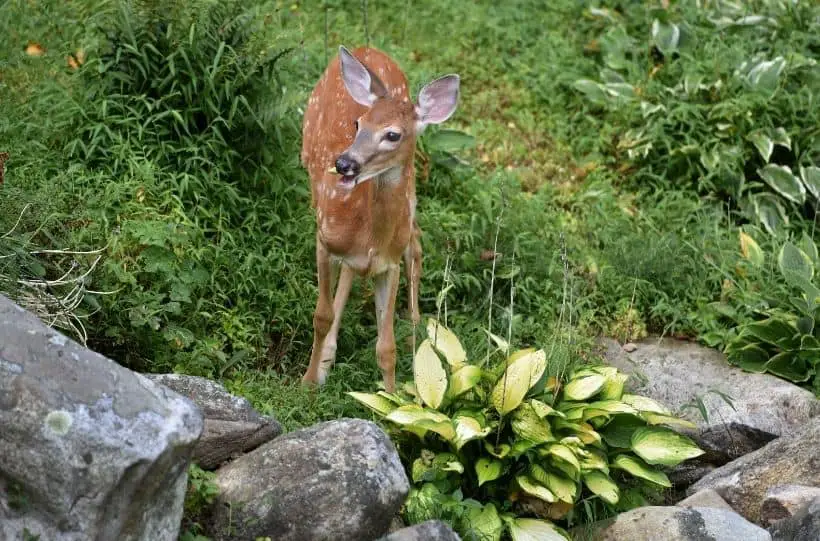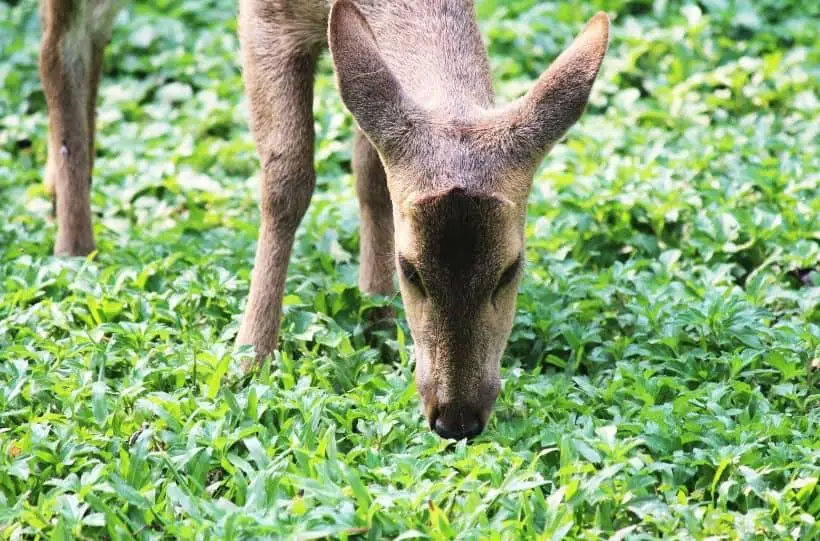How To Attract Deer To Your Backyard
Deer can be found all around the world from North America to Asia. These elusive and majestic creatures are a remarkable sight to see. Although some herds can be found in the 100s, they are extremely shy creatures that are difficult to spot in the wild.
Even though they might challenging to see in woodlands and even in open fields, there are still ways you can witness wild deer up close.
It is possible, depending upon where you live, to attract deer to your backyard. This not only benefits the deer with a stable food and water supply but benefits your garden as the deer help to naturally maintain your plants and fertilize them.
However, as deer are extremely cautious and often avoid built-up areas or where humans are present, attracting deer to your backyard can be quite difficult.
Make sure to incorporate several of these top tips below to increase your chance of spotting a deer in your garden.

This post contains affiliate links that earn me a commission at no additional cost to you.
How To Attract Deer To Your Backyard
Your Location
Most deer are often found near woodlands or open grasslands. They rely on the shelter and camouflage provided by these habitats.
If you live in an urban area, particularly in built-up cities, it is highly unlikely you will be able to attract a deer to your garden. If this is the case, don’t be too disheartened. Consider focusing on attracting some smaller, less skittish animals to your gardens such as birds, squirrels, or owls.
For those in more rural settings, you have a good chance of being able to attract deer to your backyard. As wild deer are in closer proximity, they will be able to detect food in your garden.
Deer have an amazing sense of smell and will be attracted to your garden if you provide the right food sources.
Provide A Range Of Food
Deers are herbivores, so first and foremost do not feed them kitchen leftovers, particularly meat or dairy products.
They are aggressive eaters and will feast on a large variety of plants. So make sure you are happy with the fact that once they are in your garden, you won’t be able to encourage them to eat certain plants – deer will likely help themselves to any plants they fancy.

Offering a range of trees, flowers, and grasses will help provide a variety of healthy food choices to deer. These smells, especially from flowers in your garden, will help attract them.
Research local native plant species in the area you live in to ensure you plant crops local deer would come across and graze on in the wild.
Here are deer-safe plants you can add to your garden to help attract deer:
- Red clover
- Corn
- Kale
- Orchard grass
- Turnips
- Oak trees
- Willow trees
- Petunias
- Sunflowers
- Hydrangeas
Planting a range of these plants, or preferably a range of native species to your area will help offer a stable amount of food and enough variety to minimize the risk of one type of plant being targetted.
If you are concerned about particular plants or crops being demolished by potential deer visitors, you could erect a fence. Deer tend to avoid fences so this can help protect an area of your garden from deer.
Source Of Water
Providing a reliable and clean source of water is an ideal way to attract deer to your backyard. Deer, like all mammals, need water to survive.
However, sources of fresh water can become scarce, particularly during the winter months in cold climates, or even the summer months in very hot climates.
Offering clean, fresh water every day can offer a lifeline to deer who are struggling during these months.
Make sure to change your water regularly to prevent it from becoming stale or attracting pests e.g. flies. In the winter months, the water may have frozen due to cold temperatures and will need breaking for the deer to access the freshwater.
Plant Apple Trees
Deers are attracted to sweet scents the most and cannot resist sweet apples. Apple trees not only provide a food source for deers but also offer them shelter.
However, apple trees do require a lot of time, resources, and space to grow. If your backyard does not have enough space, you can still use fresh apples and apple slices to place in your garden for attracting deer.
Provide Shelter
Shelter is not only important to help protect deers from the elements, but it also is essential for helping deers to feel safe and at ease.
Deers are naturally skittish and very wary of their surroundings as they naturally watch out for predators.
Planting a range of trees, long grasses, and shrubs in your garden will encourage more deer to visit as they feel safer under cover.
Provide A Mineral Block
Mineral blocks are extremely attractive to deer and will help attract them into your backyard. Mineral blocks contain salt which is essential in a deers’ diet. They use the salt to produce hydrochloric acid that they use to digest food.
The mineral blocks can be dug into the ground and lightly covered over. This protects the block from the sun before the deer find it. They are attracted to the scent and can easily dig it up to access it.
Deer Feeder
Just like with other animals such as birds and butterflies, you can add specially designed deer feeders to your garden.
There are a few designs you can choose from, but all offer the same purpose. They are sturdy, weather resistant, and allow you to provide a consistent supply of food to local deer.
Deer feeders can hold a range of foods but some are recommended over others. During the winter months, you can add corn due to it being a high-energy food to support deer in colder months when other food sources are sparse.
In other seasons, it is best to replace this with foods that are richer in nutrients such as oats and other cereal grains, along with a mineral block.

If you want to attract deer to your backyard, make sure to add several of these top tips to your garden plan. Remember that deer are elusive and skittish, so it is best to keep pets indoors, especially noisy ones to avoid scaring wild deer away.
Limit other loud noises and bright lights as these too will deter deer from visiting your backyard.
For more top tips on encouraging wildlife to visit your outdoor space, take a look at these posts:

